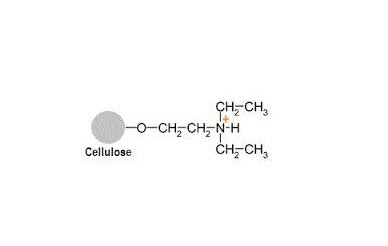What should you know about Deae Cellulose 52?
DEAE-cellulose-52 (ion-exchange chromatography) of BSP (Bamboo shoot polysaccharide)! BSP1 eluted with water; BSP2 eluted with 0.05 M NaCl; BSP3 eluted with 0.1 M NaCl; BSP4 eluted with 0.2 M NaCl; BSP5 eluted with 0.5 M NaCl.
The early excision products from irradiated E. coli
DNA, isolated by DEAE chromatography, include oligonucleotides of nucleotides
in length between 7 and 8. The isolation of these fragments by DEAE paper
chromatography and their subsequent digestion by venom phosphodiesterase (which
initiates hydrolysis at the 3' terminus) results in the release of those
nucleotides 3' to the dimer, since this exonuclease will not proceed beyond the
dimer. Exonucleolytic digestion by bovine spleen phosphodiesterase, which
initiates hydrolysis at the 5′ terminus, releases those nucleotides located 5′
to the dimer. These data show that the majority of the nucleotides are located
3' to the dimer, and very few, if any, nucleotides exist on the 5′ incision
side of the pyrimidine dimer. Such results substantiate those earlier
observations in which denatured incised DNA was shown to be refractory to
hydrolysis by spleen phosphodiesterases, indicating that the initial break is
probably near or adjacent to the pyrimidine dimer.
PrcA has been purified to homogeneity from crude
extracts of A. variabilis by ammonium sulfate precipitation followed by
DEAE-cellulose chromatography and phenyl-Sepharose chromatography. Also, active
recombinant PrcA was expressed in E. coli.




Comments
Post a Comment